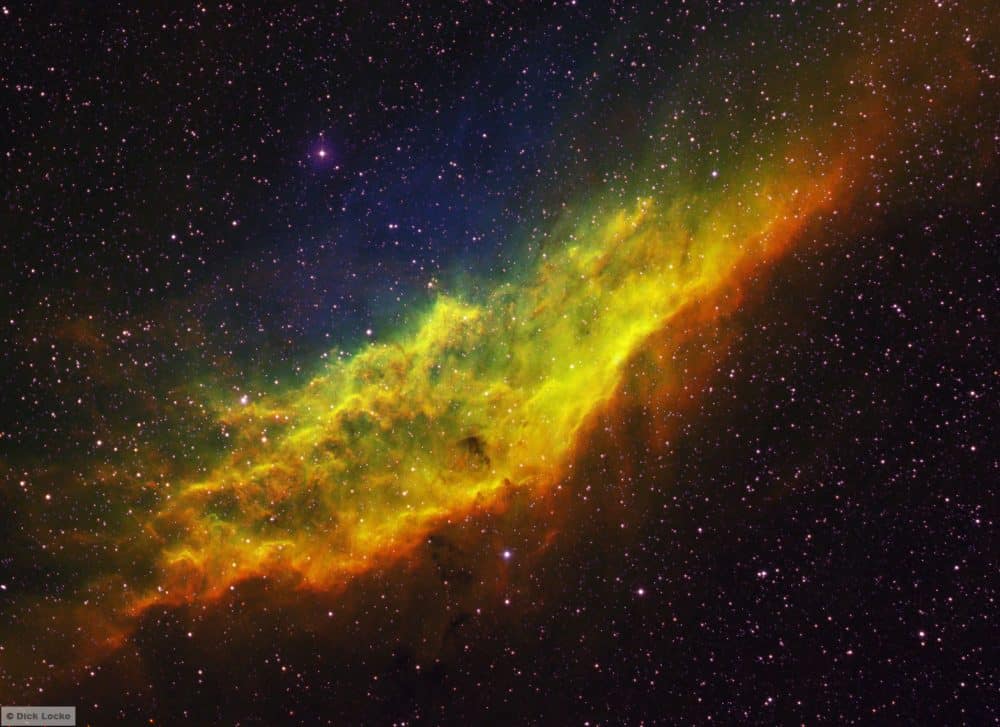The Cosmos with NGC 1499
The California Nebula (NGC 1499) is an emission nebula located in the constellation Perseus. It is so named because it appears to resemble the outline of the US State of California on long exposure photographs. It is almost 2.5° long on the sky and, because of its very low surface brightness, it is extremely difficult to observe visually. It can be observed with a Hβ filter (isolates the Hβ line at 486 nm) in a rich-field telescope under dark skies. It lies at a distance of about 1,000 light years from Earth. Its fluorescence is due to excitation of the Hβ line in the nebula by the nearby prodigiously energetic O7 star, xi Persei
The California Nebula was discovered by E. E. Barnard in 1884.
Sporting over 8 hours total exposure, the California Nebula picture above uses the popular “Hubble Palette” of colors (Red = SII, G = Ha, B = O3). Equipment: SBIG ST-8300 CCD camera with the FW8-8300 filter wheel, Astrodon narrowband 36mm filters, the Takahashi FSQ-85 telescope with reducer, AP 900GTO mount. I used MaximDL to acquire and process flat and dark frames, Registar to align, Photoshop CS5 with a little HDR toning to process from there. Other narrowband pictures with this combination, and more info, are at this link. Other astronomy pictures from the Fall 2011 trip are here.
The narrowband pictures are composed of 27*5 unbinned Ha Frames, 37*5 minute O3 frames (2x bin), and 39*4 (2xbin) Si2 frames.
